Investment casting, or precision casting, is a process through which a mold is created around a pattern that is then melted out of the mold and replaced with molten metal. It is commonly used to produce high-strength and lightweight metal components with strict tolerance requirements.
Additionally, incorporating additive manufacturing in the investment casting process allows the production of complex, thin-walled components with added flexibility in design and materials..
Barron Industries is a trusted investment castings manufacturer serving clients in many industries, including aerospace, defense, space, and other commercial industries. We can produce investment castings weighing up to 150 pounds or 68 kilograms from over 200 ferrous and non-ferrous alloys.
In addition to our investment casting capabilities, we provide:
Whether you need a few simple pieces cast in aluminum or large, complex parts in challenging alloys, we have the expertise and capabilities to meet and exceed your expectations.





NADCAP – Nondestructive Testing • AS 9100 • ISO 9001 • ITAR Registered • SAM Registered • Certified Small Business • Cage code 7L135 • Primary NAICS: 331512, 331524, 331529, 332710
Cage code 7L135 - Primary NAICS: 331512, 331524, 331524, 331529, 332710
Other Memberships and Industry Participation:
Investment Casting Institute (ICI) • American Foundry Society (AFS) • Automation Alley • National Defense Industry Association (NDIA) • Association of United States Army (AUSA) • Society of Manufacturing Engineers (SME) • U.S. Small Business Association (SBA)
There are many benefits associated with investment casting, including:
Additional benefits include:
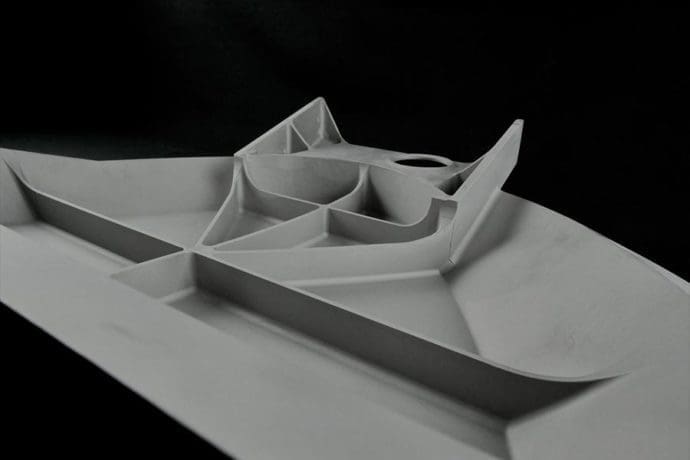
Several factors affect the investment casting process and steps, including the alloy type and size of the part being created.
As a leader in investment casting, Barron Industries couples our unparalleled knowledge and experience with state-of-the-art technology to determine the process for your investment casting project.
Our lost-wax casting process is a seamless, productive and cost-effective way to produce high strength castings with greater dimensional accuracy, higher consistency, superior product integrity and improved surface finish.
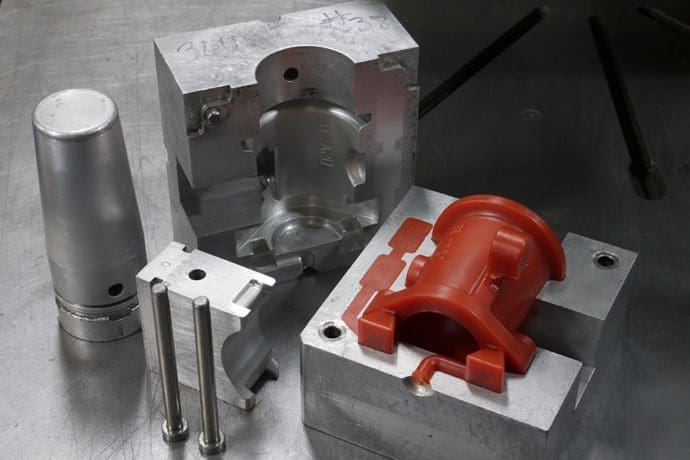
The first step in investment casting is to develop the pattern. This is generally done by injecting wax into a metal tool or “die” to form a single piece. For rapid prototypes Barron uses our in-house additive manufacturing technology to 3D print patterns.
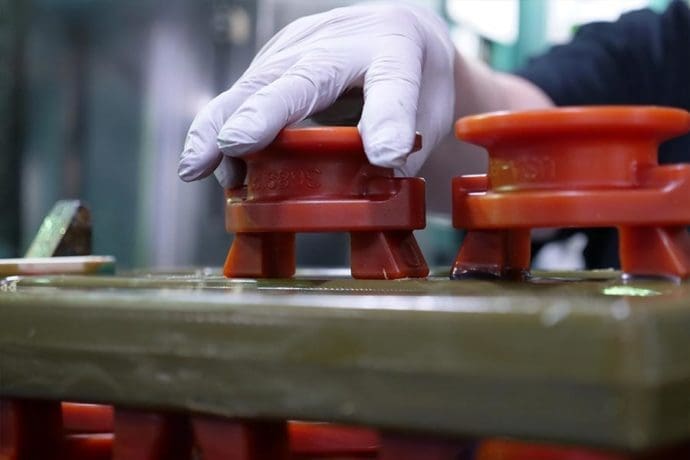
After the pattern is created, they are then connected to a central wax gating system, which includes the sprue, to form the tree assembly. Rather than create parts one at a time, the sprue works as a mounting surface to create several patterns into one mold. Those molds are later filled with an alloy. Additionally, the sprue creates a flow path for said alloy to flow into the various empty crevices of the wax pattern.

Once the wax pattern tree is assembled, it’s then dipped into a ceramic slurry and covered with coarse material. Barron’s six-axis dipping robot ensures consistency and uniformity of shell production in intricate and complex parts. When the slurry dries, it produces a ceramic shell around the wax tree. This process is repeated until the mold shell reaches its desired thickness and hardens completely.
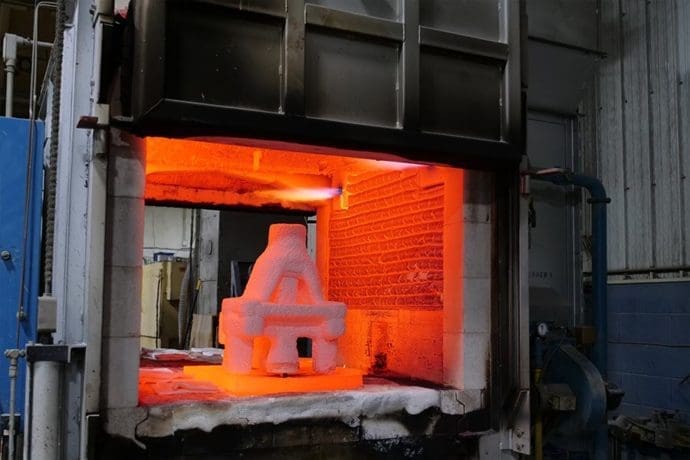
After the shell is built, a flash fire oven is used to remove the wax prior to the metal being poured into the mold. The heat from the oven melts away the leftover wax and treats the shell so it’s ready to cast. Additionally, the scorching oven temperature provides additional benefits, like increasing the stability and overall strength of the ceramic cast.
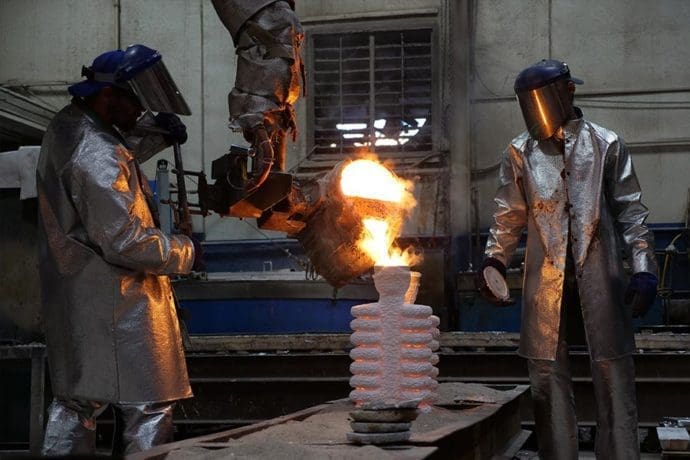
Once the mold has been cleaned, it is then preheated to a specific temperature. This helps prevent the alloy from solidifying prior to being filled. Through induction melting, the alloy is melted into a ceramic crucible. A high-frequency electric current will then create a magnetic field surrounding the alloy which creates electric fields within the metal called “eddy currents.” Because of the material’s electrical resistance, these eddy currents have the ability to heat the alloy. When heated accordingly, the molten alloy is then poured into the mold cavity. The mold is then given time to cool.

After removing the parts from the sprue and taking out the gates, the surface of the part needs to be finished. This can be done in a variety of ways. At Barron Industries, we offer the following finishing services:
With more than 100 years of metalcasting experience, the experts at Barron Industries investment casting foundry specialize in melting and pouring over 200 different types of ferrous and non-ferrous alloys, including high-strength stainless steel, aluminum, armor, and more. We can produce ferrous and non-ferrous castings ranging from 2 ounces to 150 pounds (68 kilograms).
By following the necessary process controls and secondary thermal treatment parameters, our team is well-equipped to meet any customer’s unique requirements.
The emphasis we place on quality is demonstrated by our many certifications. We are NADCAP-certified for non-destructive testing, including digital radiography and liquid penetrant testing, and we also hold AS9100, TS 16969, GE Aviation Quality Specification S-1000, NIST 800-171, and ISO 9001 certifications.
You can read more about our experience and expertise here.
Speak to one of our experts today to learn more about our custom casting solutions.